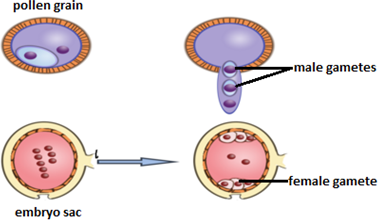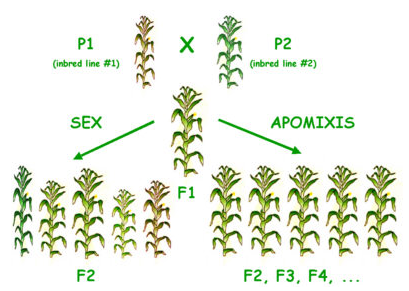11th And 12th > Biology
SEXUAL REPRODUCTION IN FLOWERING PLANTS MCQs
:
B
Exalbuminous or non-endospermic seeds have no residual endosperm because they are completely consumed during embryo development.
:
C
Parthenocarpy (virgin fruit) is the natural or artificially induced production of fruit without fertilisation of ovules, therefore the fruit is seedless. In some plants, pollination or other stimulants such as hormones are required for parthenocarpy. When plant hormones like auxins are sprayed on flowers, it could stimulate development of parthenocarpic fruits. This is termed as artificial parthenocarpy.
:
B
Angiosperms include about 250,000 species and are the most recently and highly evolved plants on Earth. Genetic variation is easily possible only in the case of sexual reproduction as it involves the fusion of genetically unique male and female gametes. And since variations and adaptations are the primary drivers for evolution, this has led to angiosperms becoming highly evolved plants.
:
B
Sporogenous tissue undergoes mitosis and forms pollen mother cells (PMC) or mitocytes. These mitocytes undergo meiosis and form haploid microspores (meiocytes) that ultimately mature and form pollen grains that are also termed meiospores.
:
A
Auxin directed growth of the hypocotyl towards light to form the shoot and gibberellin directed growth of the epicotyl causing the radicle to move downwards towards the gravity are called growth movements in plants.
:
A
In 60% of flowering plants, the pollen grains are shed at two–celled stage (tube cell + generative cell). Further, development of male gametophyte (pollen grain) occurs on stigma. Pollen grain gives rise to pollen tube which absorbs nourishment from the cells of style for its growth. Generative cell divides to give rise to two male gametes. Out of these, one fuses with the egg to form diploid zygote (generative fertilization or syngamy) whereas the second male gamete fuses with the two haploid polar nuclei or diploid secondary nucleus of the central cell to form primary endosperm nucleus (vegetative fertilization or triple fusion). These two acts of fertilization occur in the same embryo sac and are referred to as double fertilization.
:
B
A microsporangium is generally surrounded by four wall layers – the epidermis, endothecium, middle layers and the tapetum. The outer three wall layers perform the function or protection and help in dehiscence of anther to release the pollen, the innermost wall layer is the tapetum. It nourishes the developing pollen grains. Cells of the tapetum are food righ and posses dense cytoplasm and generally have more than one nucleus. They disintegrate to liberate the contents which is absorbed by the developing spores. Outer most layer of the pollen grain is called exine and each haploid pollen grain develops from diploid sporogenous cell in the anther.
:
B
In many plants, the normal process of sexual reproduction is substituted by an asexual process and as a result seeds are produced without fertilisation. This phenomenon of substituting the usual sexual process by asexual methods is known as Apomixis and plants which show this condition are called apomictic plants. Self-pollination and apomixis lead to no genetic recombination and produce pure lines similar to the parent plant.
:
A
In many plants, the normal process of sexual reproduction is substituted by an asexual process and as a result seeds are produced without the need for fertilization. This phenomenon of substitution of the usual sexual process by asexual methods is known as apomixis and plants which exhibit this condition are called apomictic plants.


















